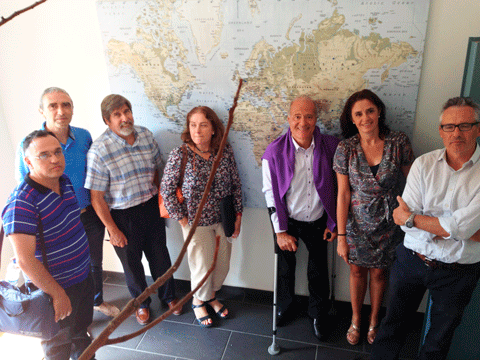International Fund for Agricultural Development new project
 A team of researchers from the Universidad Politécnica de Madrid (UPM) and the Universidad Complutense de Madrid (UCM), through their research centers, CEIGRAM and VISAVET respectively, under the umbrella of the Moncloa Campus of International Excellence (Moncloa Campus), collaborate in a project for the International Fund for Agricultural Development (IFAD) entitled "Assessment of Agricultural Informational Information Risk Management Systems (ARM-IS) in the following African Countries: Cape Verde, Cameroon, Ethiopia, Mozambique, Niger, Senegal and Uganda. "
A team of researchers from the Universidad Politécnica de Madrid (UPM) and the Universidad Complutense de Madrid (UCM), through their research centers, CEIGRAM and VISAVET respectively, under the umbrella of the Moncloa Campus of International Excellence (Moncloa Campus), collaborate in a project for the International Fund for Agricultural Development (IFAD) entitled "Assessment of Agricultural Informational Information Risk Management Systems (ARM-IS) in the following African Countries: Cape Verde, Cameroon, Ethiopia, Mozambique, Niger, Senegal and Uganda. "
The aim of the project is briefly summarized:
The purpose of this study is to investigate the availability and quality of information for agricultural risk management purposes in a set of African countries. The approach will be holistic, covering all sources of risks in agriculture, in particular risks from weather and climate, production, prices and markets, plant, animal and human health and policy. The study will cover information at different levels of aggregation: from information at individual farm or household level to information at country level.
Information is the key input for any risk management activity. Without appropriate information farmers cannot identify their main risks and select the appropriate tools to manage them, and governments cannot design their agricultural policies and respond to risks with preparedness. Lack of reliable information also discourage private sector investments or the cost to protect them is so high that the final product is not affordable for smallholders. Weak information systems will lead to wrong investments and ARM decisions.
The main focus of the informational assessment will be on the existence and timely access to information about agricultural risks in each country. The information on risks takes the form of measurements of variability over time in the main variables affecting production and markets, or the frequency and damage caused by shocks. It can also take the form of early warning information of major events or changes in trend. Most of the underlying information required to develop these risk related indicators is also useful for many purposes beyond risk management. Information Systems will be useful for agricultural risk management purposes to the extent that they provide information about variability overtime, shocks or changes in trend, or, at least, they allow to estimate them.


